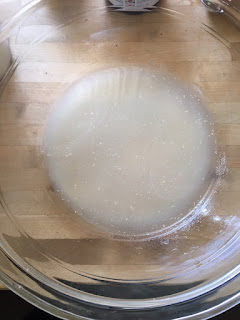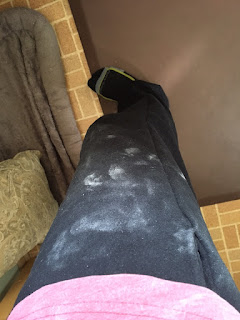First, there's the "Everyone needs a proofreader" point - which I know we've talked about in the past. No piece of writing is ever so short that it doesn't deserve having someone proofread it. This is doubly true if the piece of writing is going out into the world to represent your company. Perhaps, for instance, if you're running an ad in a relatively high-end Minneapolis/St. Paul magazine.
**We'll discuss levels of culpability in a moment, don't worry.
Then, there's the "You don't use an apostrophe to make a word plural" point, which is one of the things that everyone should have learned in grammar school (you know, when being taught grammar). In other words:
day is singular: One day at a time.
days is plural: There are seven days in a week.
day's is still singular, and now it is also possessive: The day's highlight was writing this post.
Of course, there is one instance where I can see people getting confused, but I'm going to try to make it clear:
days' is both plural and possessive, but the "s" makes it plural (see above), while the apostrophe makes it possessive (each piece has its own reason for being there): Several days' work left him exhausted.
Why don't we look at this again:
The singular "day" is made plural by adding an "s" = days
The singular "day" is made possessive by adding "apostrophe-s" = day's
The (already) plural "days" is made possessive by simply adding an apostrophe = days'
I'm not going to say this is always the rule - because no language is so cut-and-dried - but it's pretty solid.
Which brings me back to the relatively high-end Minneapolis/St. Paul magazine ad which I saw last week.
But, first, a quick chain-of-command discussion for such publications. I used to work with the production of programs for theatrical events, and we often would send over all of our copy and images to the production team at the company we worked with to create the programs. That production team would also compile all of the ads that went into the programs, and would help with all of the layout. Often, if we had any errors in our text (or wonky images, or anything), someone at the production house would let us know either by calling us up or by flagging them in the physical proof.
Once the physical proof was ready to go, they'd send it back to us, and our team would go through it with a fine-tooth comb to make sure that everything we had sent through was correct. We may or may not look at the ads (many of which may not even have been placed, yet), and then either sign off or request changes.
At the same time, the production team would look at everything one more time (or lots more times), and - from time to time - would have to again reach out to us - or to the ad creators. If the ads came from people who were in a hurry - or who didn't think it mattered - they'd just let errors slide. And... well... I think that might come into play in what I saw this week.
One more quick refresher on plural and possessive nouns:
client = singular clients = plural
client's = singular possessive clients' = plural possessive
I apologize, in advance, if the following image makes your eyes and/or head hurt:*
 |
| The best I can say is that it's possible that the third apostrophe on that page ("buyer's") might be correct - though I believe they probably meant it to be possessive and plural = "buyers'." |
Seriously, folks. High-end magazine. Full-page ad. Wouldn't it have been worth it to pay a proofreader $20 to make sure that your firm didn't look like... well... like that ad makes them look?
*I'd also like to point out that "Client's" should be lower case in the second line. But I'm letting that slide since it's the least egregious of the errors on the page.



















































